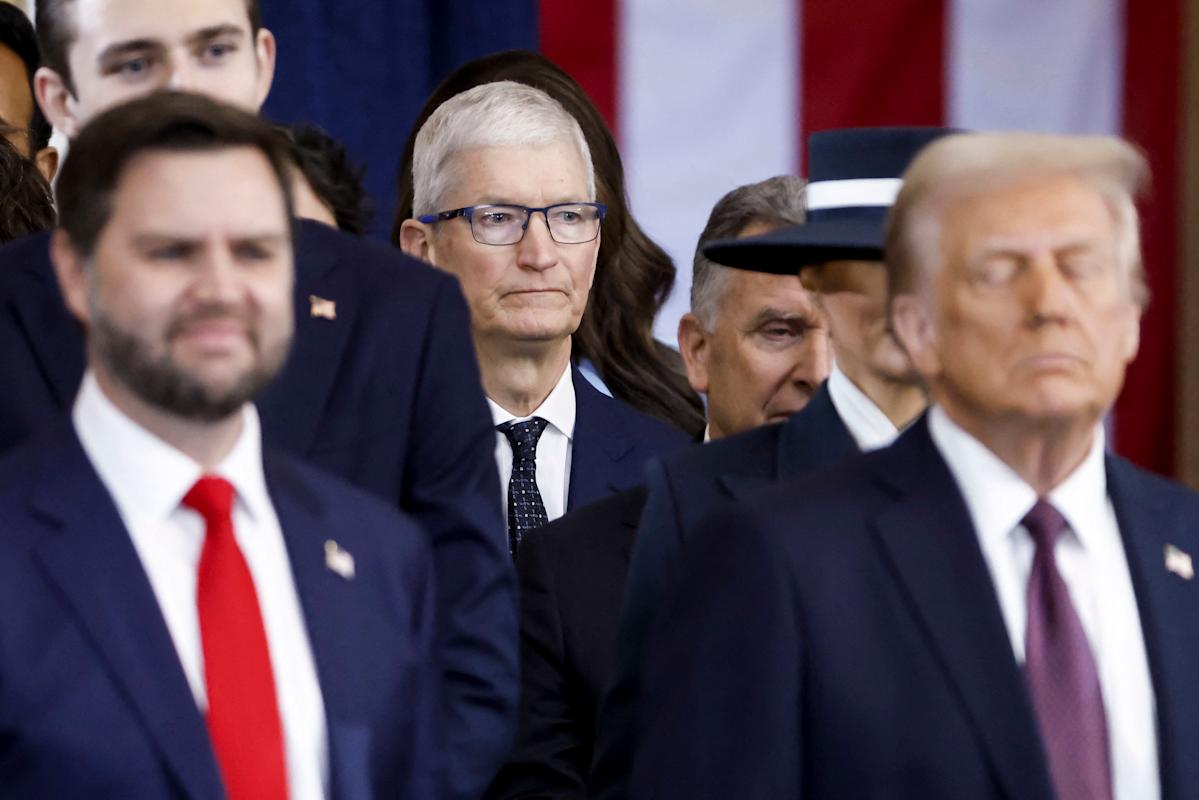Apple (AAPL) CEO Tim Cook has spent years trying to shield the tech giant from tariffs by reducing its reliance on China, shifting production to countries like India and Vietnam in a strategy that dates back to President Trump’s first-term tariffs on Beijing.
But that effort now appears to have run into a familiar obstacle: Trump once again.
Apple stock erased over $100 billion from its market cap early Friday after Trump said the iPhone maker must pay at least a 25% tariff unless its iPhones are made in the US.
Read more: The latest news and updates on Trump’s tariffs
The warning underscores the limits of Apple’s recent effort to insulate itself from geopolitical risk.
At close: May 23 at 4:00:01 PM EDT
AAPL ^GSPC ^IXIC
Although China still accounts for roughly 85% of iPhone production, Apple has significantly expanded its manufacturing footprint in recent years, investing heavily in countries like India and Vietnam.
India, in particular, has seen a surge in iPhone output as Apple sought to get ahead of Trump’s impending tariffs. This culminated in a record $2 billion worth of devices being airlifted to the US in March by suppliers Foxconn and Tata, just weeks before Trump’s Liberation Day announcement.
Since then, the president has paused most additional duties on other countries, with the exception of China. The US has placed a 30% tariff rate on Beijing imports, while most other countries face a lower 10% levy.
The shift is already reshaping the origins of Apple’s product sourcing.
“For the June quarter, we do expect the majority of iPhones sold in the US will have India as their country of origin and Vietnam to be the country of origin for almost all iPad, Mac, Apple Watch, and AirPods products also sold in the US,” Cook said on the company’s earnings call last month. “China would continue to be the country of origin for the vast majority of total product sales outside the US.”
On top of diversifying its supply chain, Apple announced plans earlier this year to invest more than $500 billion in the US over the next four years. That includes hiring 20,000 people and building a new server factory in Texas.
“We are bullish on the future of American innovation, and we’re proud to build on our long-standing U.S. investments with this $500 billion commitment to our country’s future,” Cook said in a company blog post.
But, as Friday’s warning showed, those efforts haven’t been enough to shield the company from Trump’s tariff threats.
Apple CEO Tim Cook (C) looks on behind US President Donald Trump (R) and US Vice President JD Vance (L) after the two were sworn into office at an inauguration ceremony in the rotunda of the US Capitol in Washington, DC, on January 20, 2025. (Photo by SHAWN THEW / POOL / AFP) (Photo by SHAWN THEW/POOL/AFP via Getty Images) · SHAWN THEW via Getty Images
“I have long ago informed Tim Cook of Apple that I expect their iPhone’s that will be sold in the United States of America will be manufactured and built in the United States, not India, or anyplace else,” Trump said in a Truth Social post on Friday morning. “If that is not the case, a Tariff of at least 25% must be paid by Apple to the U.S.”
Story Continues
